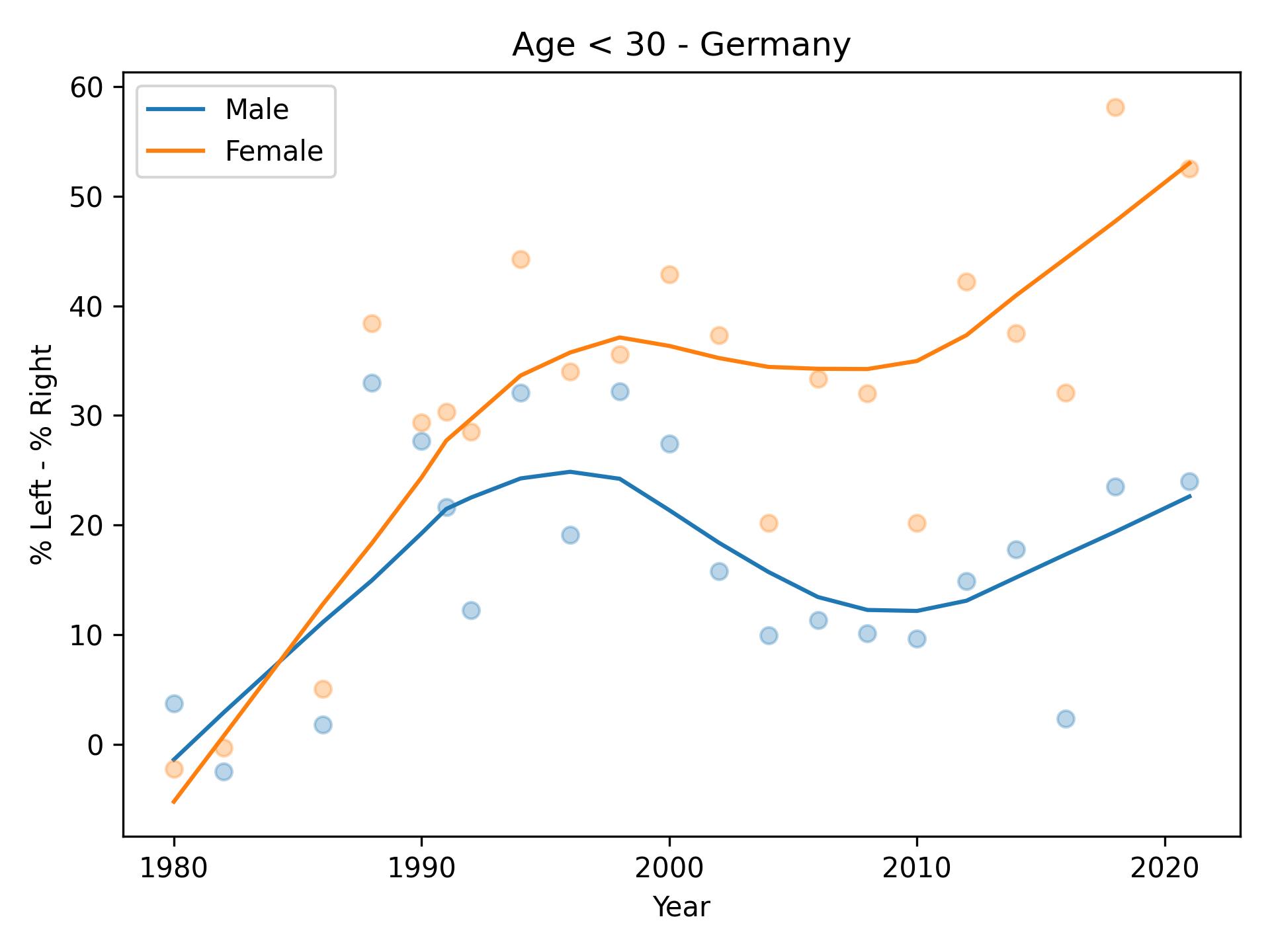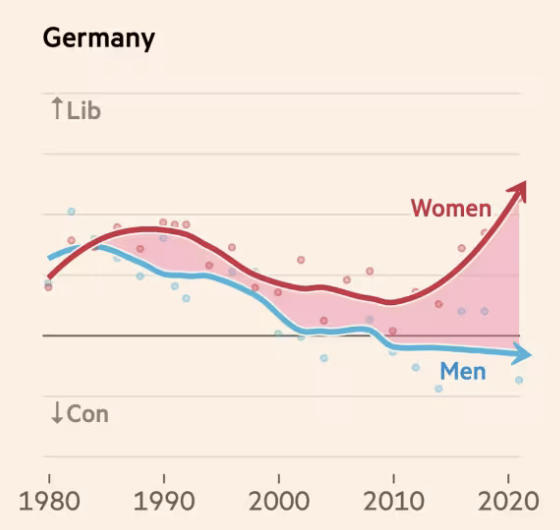Is there a growing gender gap of political attitude in Germany?
On the blog of Allen Downey I recently stumbled upon a blogpost about an article of the Financial Times which claims that there is a growing gap in the political attitude of young man and woman emerging globally. This is a strong claim with lots if implications. If it is true.
Allen had a deep look into this claim for the US which you can find on his blog here, here, here and here. Spoiler: Allen is not able to replicate the results from the Article with multiple methods and datasets for the US.
A couple of month back I had a look into the German General Social Survey (“ALLBUS”). The survey is conducted every two years and covers a wide range of topics. Unfortunately only few questions are asked every iteration but one of the questions which is asked regularly is a self report of the political belief on a scale from “left” to “right”. While this questions has a lot of problems (e.g. what does “left” mean? is there a bias because of socially expected answers?) it still can give us an indication whetehr the FT claim holds for Germany.
The self reported political attitude is measured on a scale of 1 to 10 where 1 means “left” and 10 means “right”. All values 1 to 5 are considered “left” and all values 6 to 10 are considered “right”. The difference between the two attitudes is then plotted over time. The result is shown in the following plot:

Now lets compare this to the graph shown in the Financial Times article for Germany:

Financial Times, https://www.ft.com/content/29fd9b5c-2f35-41bf-9d4c-994db4e12998
While there is a gap in self reported political atittude between man and woman and this gap grew between 1990 and 2010 the claim of the FT that this gap is growing recently is hardly supported by the data.
Unfortunetaly that all I can do here. I do not have access to more or better data but beside that the article does not give us any way of validating the claims made:
- The article claims the data is based on social surveys but it does not provide a exact source according to scientific principles.
- The code of the analysis is not provided and thus can not be replicated.
- The plot is misleading since it suggests that man are becoming more conserative. This is not true. Both man and woman report themself to be more left leaning over time. If anything woman become more left leaning a little faster.
Hopefully somebody else has a look into data for other countries so we can get a better picture of the situation.
Code: https://github.com/bhundt/PoliticalIdeologyGenZGermany